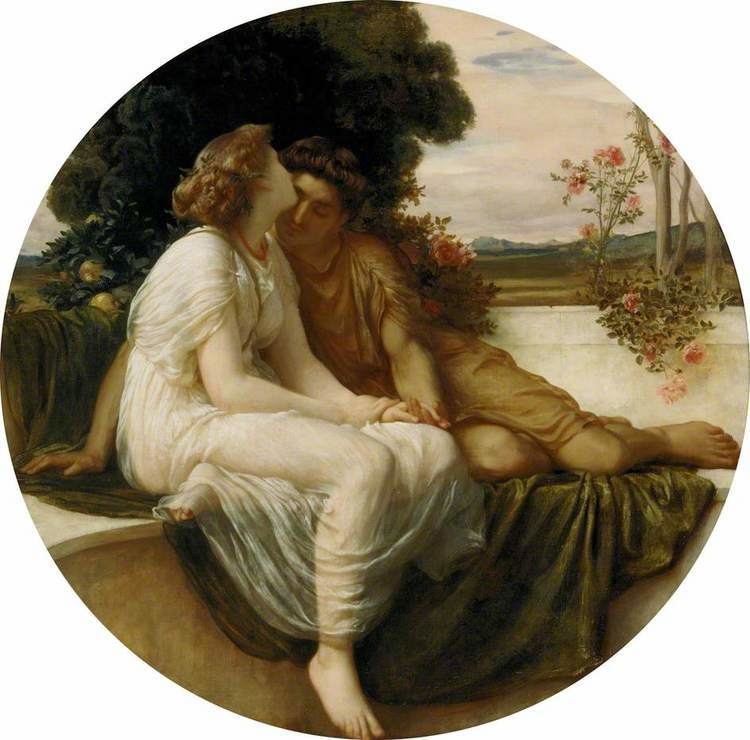 | ||
The poetry of Gaius Valerius Catullus was written towards the end of the Roman Republic. It describes the lifestyle of the poet and his friends, as well as, most famously, his love for the woman he calls Lesbia.
Contents
Inspirations
Catullus deeply admired Sappho and Callimachus. Poem 66 is a translation of the poem Βερενίκης Πλόκαμος ("Berenice's Braid") of Callimachus, while Catullus 51 is an adaptation and re-imagining of Sappho 31. Poems 51 and 11 are the only poems of Catullus written in the meter of Sapphic strophe, and may be respectively his first and last poems to Lesbia. He was also inspired by the corruption of Julius Caesar, Pompey, and the other aristocrats of his time.
Influence
Catullus was a popular poet in the Renaissance and a central model for the neo-Latin love elegy. By 1347 Petrarch was an admirer and imitator who read the ancient poet in the Verona codex (the "V" manuscript). Catullus also influenced other humanist poets, including Panormita, Pontano, and Marullus.
Catullus influenced many English poets, including Andrew Marvell and Robert Herrick. Ben Jonson and Christopher Marlowe wrote imitations of his shorter poems, particularly Catullus 5, and John Milton wrote of the poet's "Satyirical sharpness, or naked plainness."
He has been praised as a lyricist and translated by writers including Thomas Campion, William Wordsworth, James Methven, and Louis Zukofsky.
Poems 5, 8, 32, 41, 51, 58, 70, 73, 75, 85, 87 and 109 were set to music by Carl Orff as part of his Catulli Carmina.
Style
Catullus wrote in many different meters including hendecasyllabic and elegiac couplets (common in love poetry). All of his poetry shows strong and occasionally wild emotions especially in regard to Lesbia. He also demonstrates a great sense of humour such as in Catullus 13 and 42.
Many of the literary techniques he used are still common today, including hyperbaton: plenus saculus est aranearum (Catullus 13), which translates as ‘[my] purse is all full – of cobwebs.’ He also uses anaphora e.g. Salve, nec minimo puella naso nec bello pede nec…(Catullus 43) as well as tricolon and alliteration. He is also very fond of diminutives such as in Catullus 50: Hestero, Licini, die otiose/multum lusimus in meis tabellis – Yesterday, Licinius, was a day of leisure/ playing many games in my little note books.
History of the texts of Catullus's poems
Far more than for major Classical poets such as Virgil and Horace, the text of Catullus's poems is in corrupt condition, with omissions and disputable word choices present in many of the poems, making textual analysis and even conjectural changes important in the study of his poems.
A single book of poems by Catullus barely survived the millennia, and the texts of a great many of the poems are considered corrupted to one extent or another from hand transmission of manuscript to manuscript. Even an early scribe, of the manuscript G, lamented the poor condition of the source and announced to readers that he was not to blame:
Even in the twentieth century, not all major manuscripts were known to all major scholars (or at least the importance of all of the major manuscripts was not recognized), and some important scholarly works on Catullus don't refer to them.
Before the fourteenth century
In the Middle Ages, Catullus appears to have been barely known. In one of the few references to his poetry, Isidore of Seville quotes from the poet in the seventh century. In 966 Bishop Rather of Verona, the poet's hometown, discovered a manuscript of his poems "and reproached himself for spending day and night with Catullus's poetry." No more information on any Catullus manuscript is known again until about 1300.
Major source manuscripts up to the fourteenth century
A small number of manuscripts were the main vehicles for preserving Catullus's poems, known by these capital-letter names. Other, minor source manuscripts are designated with lower-case letters.
In summary, these are the relationships of major Catullus manuscripts:
Descriptions and history of the major source manuscripts
In print
The text was first printed in Venice by printer Wendelin von Speyer in 1472. There were many manuscripts in circulation by this time. A second printed edition appeared the following year in Parma by Francesco Puteolano, who stated that he had made extensive corrections to the previous edition.
Over the next hundred years, Poliziano, Scaliger and other humanists worked on the text and "dramatically improved" it, according to Stephen J. Harrison: "the apparatus criticus of any modern edition bears eloquent witness to the activities of these fifteenth and sixteenth-century scholars."
The divisions of poems gradually approached something very close to the modern divisions, especially with the 1577 edition of Joseph J. Scaliger, Catulli Properti Tibulli nova editio (Paris).
"Sixteenth-century Paris was an especially lively center of Catullan scholarship," one Catullus scholar has written. Scaliger's edition took a "novel approach to textual criticism. Scaliger argued that all Catullus manuscripts descended from a single, lost archetype. ... His attempt to reconstruct the characteristics of the lost archetype was also highly original. [...] [I]n the tradition of classical philology, there was no precedent for so detailed an effort at reconstruction of a lost witness."In 1876, Emil Baehrens brought out the first version of his edition, Catulli Veronensis Liber (two volumes; Leipzig), which contained the text from G and O alone, with a number of emendations.
In the twentieth century
The 1949 Oxford Classical Text by R.A.B. Mynors, partly because of its wide availability, has become the standard text, at least in the English-speaking world.
One very influential article in Catullus scholarship, R.G.M. Nisbet's "Notes on the text and interpretation of Catullus" (available in Nisbet's Collected Papers on Latin Literature, Oxford, 1995), gave Nisbet's own conjectural solutions to more than 20 problematic passages of the poems. He also revived a number of older conjectures, going as far back as Renaissance scholarship, which editors had ignored.
Another influential text of Catullus poems is that of George P. Goold, Catullus (London, 1983).
